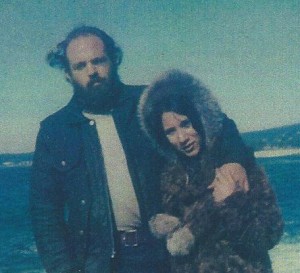The $9 Billion Witness: Meet JPMorgan Chase's Worst Nightmare
By Matt Taibbi
November 6, 2014
Back in 2006, as a deal manager at the gigantic bank, Fleischmann first witnessed, then tried to stop, what she describes as "massive criminal securities fraud" in the bank's mortgage operations.
Thanks to a confidentiality agreement, she's kept her mouth shut since then. "My closest family and friends don't know what I've been living with," she says. "Even my brother will only find out for the first time when he sees this interview."
...A few months into her tenure, Fleischmann would later testify in a DOJ deposition, the bank hired a new manager for diligence, the group in charge of reviewing and clearing loans. Fleischmann quickly ran into a problem with this manager, technically one of her superiors. She says he told her and other employees to stop sending him e-mails. The department, it seemed, was wary of putting anything in writing when it came to its mortgage deals...
Soffer v. J.P. Morgan Chase/Judge Joel Wohlfeil
by David Soffer
October, 2014
I filed a law suit against both J.P. Morgan Chase and Select Portfolio Servicing as Chase
transferred the servicing of my loan to SPS but still actually owns the loan and controls
the servicing. I was in foreclosure and filed a law suit and scheduled a hearing for
Injunction relief. However prior to the hearing I informed the Judge's clerk Lisa that I had
been through both the criminal and civil courts and saw how corrupt the lawyers,
Judges, AND CLERKS were.
At my hearing Judge Joel Wohlfeil refused to hear me and the bailiff approached me
and told me I had to leave or she would call the Sheriff! I turned back to the Judge and
tried to speak to him again but he turned away and the bailiff called the Sheriff. This is
absolute Tyranny!!! When a Judge violates a person's Constitutional Right to Free
Speech at his own hearing, that is the end game! The public courtroom is the one place
where this right is the most protected!
The lawyers for Chase and SPS were so crooked that they simply sent the court their
documents to dismiss the case for the Judge to sign! There was no motion to dismiss
and Chase never even served me with the documents before they were filed because
there was absolutely no basis for it. Then the clerks just rubber stamped the documents
and went into the computer system and entered in that the case was dismissed against
both Chase and SPS!!!!
So there was no hearing as they did not want me in court because they knew I wasn't
afraid to speak out. I had spoken out before in court and it was terribly embarrassing
because I simply told the truth about how the lawyers were so abusive and unethical.
The attorney that was representing Chase left the firm after I filed a Declaration stating
she violated the Attorney Code of Conduct by filing an Answer that had no merit. So the
lead counsel for the firm representing Chase had some degree of integrity.
However this same lawyer went ahead and filed documents for Chase to have the case
dismissed even thought she was no longer with the firm representing Chase. I had
informed the court that she was no longer with the firm in an affidavit that I filed.
However the court ignored this and rubber stamped the documents anyway. I do not
have the documents that dismissed the case against Chase because they would not
image these and there are no longer anymore case files!
I do however have the documents that dismissed the case against SPS which were
rubber stamped. But here is the important part. The lead attorney for Chase actually
went ahead and filed a document for the Civil Case Management Conference scheduled
for this Friday, October 31, 2014 at 1:30pm in Dept 73. Since the lead attorney filed this
AFTER the case was dismissed, the court HAD to change the status back to Pending
because this was obviously contrary to the dismissal and the lead attorney for Chase
evidently was not going to go along with what the did.
As a result the clerks had to cover up what they did. I have the documents that were
sent to me from the Firm representing SPS with just the rubber stamp of the Judges
signature and I also have the ones the Judge actually signed after the case was
switched back to Pending. The ones with the signature are stamped ORIGINAL and the
ones that are rubber stamped say COPY but this is false and makes no sense. The
ones that say copies are obviously not copies because they are not the same and the
ones that say original are not original or SPS would have sent me copies of those
instead of the ones that were rubber stamped. Also the Judge then went and actually
signed the documents that dismissed the case against SPS as they obviously could not
show ones that were rubber stamped. So I have two sets of documents that dismissed
the case against SPS. One set is rubber stamped and the other is signed. Both have
the same date but you can easily see that they are not the same documents. So the
question is why would there be a stamped copy if the Judge signed the documents.
The entries on the Register of Actions show that JP Morgan Chase filed documents for
their dismissal but the documents that were imaged are the ones for SPS!!! The courts
are violating the law by removing/destroying public records which is a felony. They are
concealing/covering up what they have done!!!! And no one will do anything about it
because the dirty little secret they don't want us to know is that the lawyers, Judges,
prosecutors, and police have all the power to take legal action against each other when
they do something wrong. So they don't unless it's unavoidable like when the media is
all over the story. Otherwise they leave each other alone so that way they can all get
away with whatever they want!!!!!!!
Now they have cleared the calender so no other cases will be in court when I have my
hearing because they know what they have done and do not want anyone to hear me
speak the truth about it.
Dept. 73 at the downtown San Diego Civil Courthouse at 330 West Broadway. My case
can be viewed at www.sdcourt.ca.gov. The case # is 16768.
Sincerely,
David Soffer
858-213-5650
sofferplace@gmail.com


